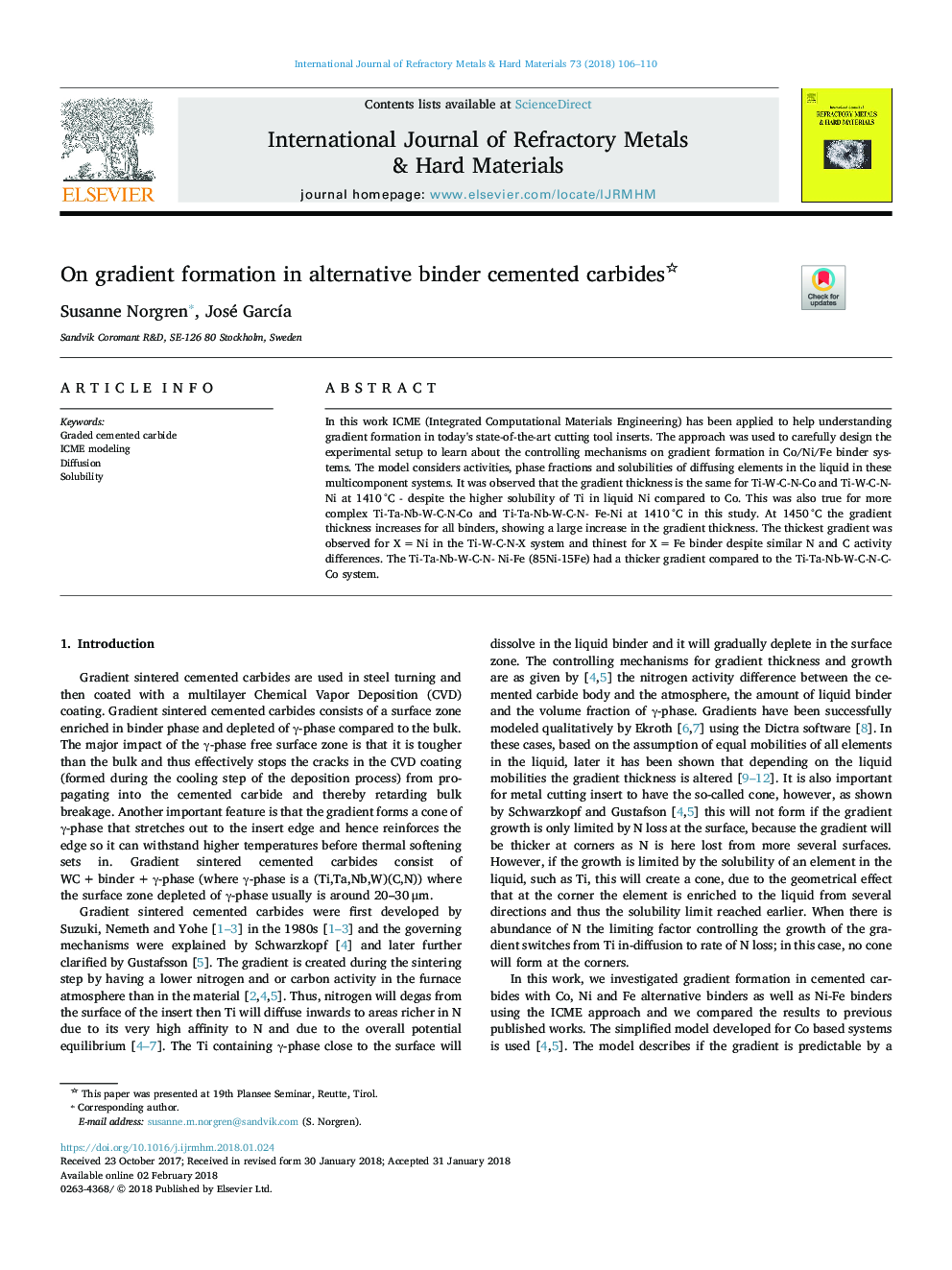| Article ID | Journal | Published Year | Pages | File Type |
|---|---|---|---|---|
| 7989689 | International Journal of Refractory Metals and Hard Materials | 2018 | 5 Pages |
Abstract
In this work ICME (Integrated Computational Materials Engineering) has been applied to help understanding gradient formation in today's state-of-the-art cutting tool inserts. The approach was used to carefully design the experimental setup to learn about the controlling mechanisms on gradient formation in Co/Ni/Fe binder systems. The model considers activities, phase fractions and solubilities of diffusing elements in the liquid in these multicomponent systems. It was observed that the gradient thickness is the same for Ti-W-C-N-Co and Ti-W-C-N-Ni at 1410â¯Â°C - despite the higher solubility of Ti in liquid Ni compared to Co. This was also true for more complex Ti-Ta-Nb-W-C-N-Co and Ti-Ta-Nb-W-C-N- Fe-Ni at 1410â¯Â°C in this study. At 1450â¯Â°C the gradient thickness increases for all binders, showing a large increase in the gradient thickness. The thickest gradient was observed for Xâ¯=â¯Ni in the Ti-W-C-N-X system and thinest for Xâ¯=â¯Fe binder despite similar N and C activity differences. The Ti-Ta-Nb-W-C-N- Ni-Fe (85Ni-15Fe) had a thicker gradient compared to the Ti-Ta-Nb-W-C-N-C-Co system.
Keywords
Related Topics
Physical Sciences and Engineering
Materials Science
Metals and Alloys
Authors
Susanne Norgren, José GarcÃa,
